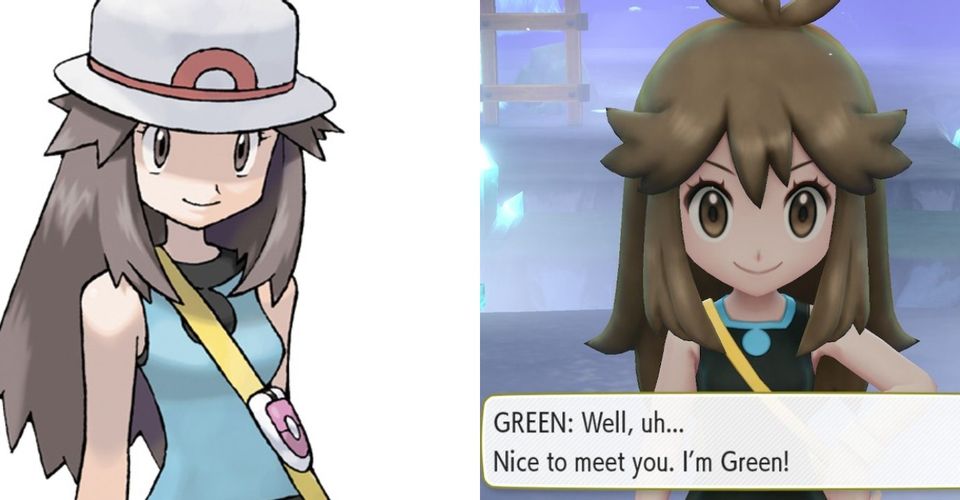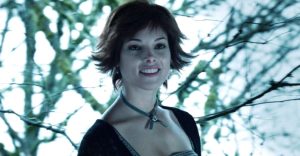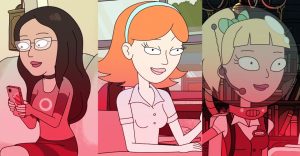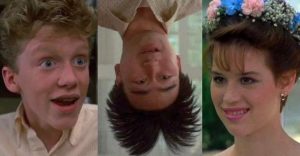Pokémon: 10 Things You Didn’t Know About Leaf

Since the ’90s saw the launch of the gargantuan Pokémon franchise, the “lore” of the world has gotten more complex than some might think. It’s fairly simple to avoid the convoluted nature by just sticking to one timeline/game, as the universe adopts a smaller version of a Marvel or DC comics multiverse with different versions of characters and stories.
Leaf is one of the popular female protagonists of the mainline games, though there are unique incarnations of the Kanto protagonist across different mediums. Interpretations vary and not everything fits exactly in every timeline followed.
10 Ken Sugimori’s Early Concept

Speaking more generally, it can be argued that the early conceptual design for Leaf started back when the original games released in Japan and before they made their way westward. Pokémon Red and Green originally launched on February 27, 1997 in Japan and the legendary franchise artist Ken Sugimori had illustrated concept art that featured in the official strategy guide for the pair of games.
Later, his artwork of her was on the cover of a revised version of the guide that included Blue as well. She was originally planned to be another supporting role in the game rather than a playable character, though, that obviously didn’t come to pass at that time.
9 Green In Pokémon Adventures

Just under a year after Sugimori’s original concept art of the character released, this “prototype Leaf” design came to fruition on another medium. The Pokémon Adventures ongoing manga series debuted the character Green as a supporting role alongside Blue in the Red, Green & Blue arc.
It’s the first time Sugimori’s original plans for the character were realized, as her concept in the strategy guide for the original games intended for her to complete a trio of rival characters along Red and Blue. This would’ve been a welcome additional story beat to cover in the mainline games.
8 FireRed & LeafGreen

Leaf’s big mainline video game debut came in the (first) pair of remakes of the original games with 2004’s FireRed and LeafGreen on the Game Boy Advance. In the 96/98 games players could only play as Red for a protagonist, and after Crystal introduced the feature of choosing to play as a male or female character, it was a clear mainstay to have in every main game onward.
Meaning, this marked the first time a female protagonist was playable in Kanto Pokémon games. She is canonically named Leaf in the games and is her most definitive character design, and Green in the manga eventually took on the design to coincide with the games’ release.
7 Let’s Go, Pikachu! & Eevee!

Even further down the line, and 22 years after Sugimori’s original art, “Leaf” once again made an appearance in a main series game in 2018’s pair of games Let’s Go, Pikachu! and Eevee! in the form of Green. The games were the second set of Kanto remakes and the fourth time overall that the first generation region was literally remade when counting the Johto entries.
They’re simultaneously remakes of Yellow specifically and being an alternate sequel to the events of the original Game Boy games. Green features as a post-game NPC and boss battle in the Cerulean Cave leading up to Mewtwo.
6 Incarnations Or Cross-Canon?

While it’s already been said that Leaf has had several different incarnations across different timelines and mediums within the Pokémon franchise, that’s more so accepted spiritually than literally or officially. Looking at Green and Leaf in the manga and games, they certainly share similarities, but it’s canonically unclear if they’re all the same character as incarnations in order to fit a given timeline or if they’re cross-canon counterparts and equivalents.
Similar for characters like Blue, particularly since Gary and Blue look practically identical, but Red seems very obviously a cross-canon equivalent rather than actually Ash from the anime.
5 Pokémon Craft DX Magazine

Around the time Leaf’s conceptual design would appear in Adventures, she appeared in in a Japanese magazine Pokémon Craft DX. Shortly after the release of the original games in Japan, Craft DX was a magazine that, as the name would suggest, was for arts & crafts and do-it-yourself projects.
This is definitely one of the far more obscure references to the character, though it’s evident that the design resonated elsewhere in the franchise. Her appearances in the magazine is essentially what the final design for her character “Green” in the initial Adventures manga arc. Unsurprising since Sugimori’s art style is a signature that influences and resonates within the franchise’s character/creature designs today.
4 Battle Revolution Cameo

Leaf never featured as a playable character or NPC in any of the gen four handheld Pokémon games, but she technically did have a cameo in one of the Nintendo Wii games. In an early gameplay trailer for Pokémon Battle Revolution, both Leaf and Red appeared battling each other, with the former using a Groudon and Pikachu to defeat him.
However, emphasis on “technically,” as this was a bit of false advertisement from the developers. Both of these characters were solely used for that trailer and didn’t make it into the final game as boss fights or otherwise.
3 Smash Bros. Brawl Easter Egg

Staying on the prime days of the Nintendo Wii, Leaf had a bit of an Easter egg in Super Smash Bros. Brawl. With the all-star Nintendo cast of characters since the Nintendo 64 game, mainstay Jigglypuff representing the franchise could wear a piece of Leaf’s wardrobe. If the player changes character palettes, Puff will wear her hat in one of the alternate costumes.
The next Smash Bros. entry didn’t feature Leaf fully, but the most recent entry in the series Ultimate has her as a playable character if the player does a palette swap when choosing Pokémon Trainer.
2 Pokémon Pocket Monsters Manga

While Adventures may be the most popular manga for the franchise, it isn’t the only one. Pokémon Pocket Monsters is a separate manga series that surely has a “different” art style as well as genre differences. It’s typically written as a slapstick-comedy gag series, and a surprisingly crude one at that, rather than the more conventional Pokémon stories that are in Adventures.
The series is serialized in CoroCoro magazine and is apparently fairly popular in Japan. As far as “incarnations” of Leaf go, she’s the only non-rival female layer character to have one in Pocket Monsters.
1 Known As “Blue” In Japan For A Time

In Japan, the original pair of Pokémon games were Red and Green, with Blue — the game that completed the pair outside Japan — coming in October 1996 exclusively to CoroCoro subscribers and to the general public in 1999. Blue was originally released as a patched-up version of the original Japanese versions, which is why the west never saw Green.
Given the fact that Leaf/Green wasn’t a character in the original games and Green Version was the actual initial part of the pairing, the rival to Red (the player character) was referred to in Japan as “Green.” With the female character not coming until later, she was referred to in Japanese as “Blue” to match Adventures canon until her official name was cemented as “Leaf” in FireRed and LeafGreen and “Green” in Let’s Go, Pikachu! and Eevee! in gaming canon.
About The Author

















